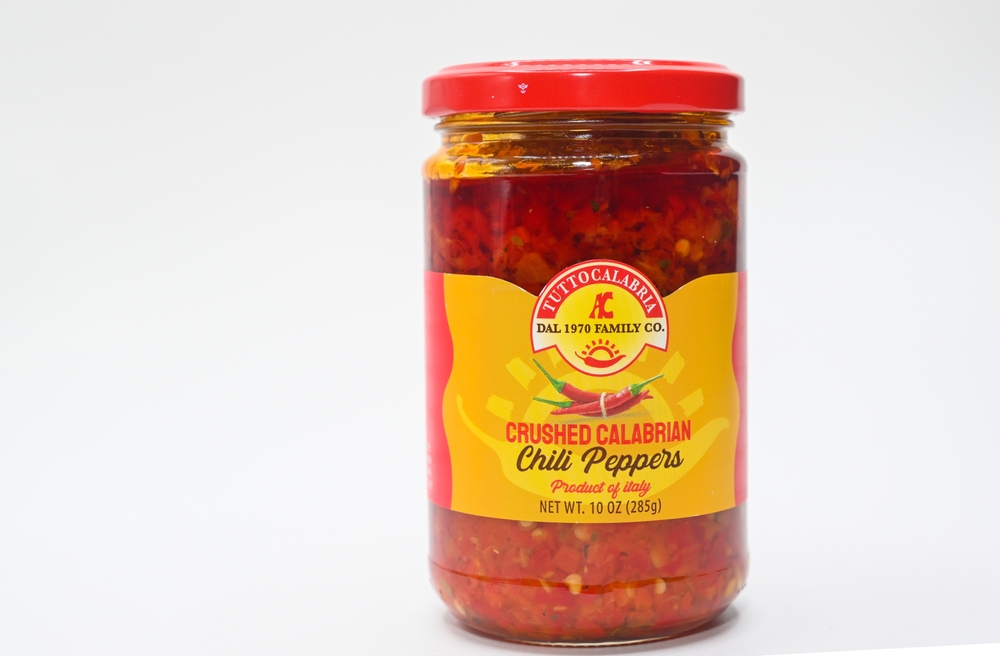It's easy to assume that chili paste, a simple condiment, is a one-size-fits-all solution found on any grocery shelf. But chili paste is one of the most varied and nuanced ingredients, with several varieties representing all cuisines.
What Is Chili Paste?
Chili paste is a thick paste made from chilis. While this basic fact is true, there is more to the story.
At its most basic, chili paste is created by grinding a chili of choice into a fine pulp, typically using a mortar and pestle. Different flavorings and spices can be added as needed and viola’ – you have chili paste.
But depending upon where you are in the world, chili pastes can differ significantly in flavor, heat level, and consistency. Even within cuisines, there can be a wide variation. Mexican chili paste, for instance, can be mild, smoky, or very spicy.

Is Chili Paste The Same As Chili Sauce?
Chili paste and chili sauce often get confused with one another. They are not the same thing, however.
Although the base for both is chili peppers, they differ in a few significant ways:
Texture – Chili paste is decidedly thicker than chili sauce. Consider it something that could be slathered or spread versus drizzled or used to top something.
Ingredients and flavor – Chili paste has a more concentrated flavor since it is so thick due to the whole ingredients (reconstituted dried chilis, garlic, and sometimes nuts or seeds). Chili sauce will have more liquid (water or vinegar) added to make it pourable. This also dilutes the flavors.
Application – Chili sauces are usually used to dress dishes or add flavor when additional moisture is beneficial. Chili paste is best used when creating depth of flavor, but you don’t want to affect the consistency of your dish. It’s often added to soups, stews, or marinades to create another layer to the flavor profile.
It’s not uncommon for chili paste and chili sauce to be used interchangeably. Doing this without modifying the ingredient is a mistake, though.
If you need to substitute one for the other, you’ll need to take the extra step of changing the consistency. For instance, add water, vinegar, or juice from canned tomatoes to chili paste to loosen it and create a “sauce.” You can simmer chili sauce over low heat until the excess moisture has evaporated and a more paste-like consistency is achieved.
Different Types Of Chili Paste
Chili paste should be considered a category rather than an individual item. There are too many varieties for chili paste to be discussed without specifying the type needed in any recipe.
Among the types of chili paste available, the most commonly used are:
Ancho paste
Ancho paste is commonly used in Mexican cuisine and showcases dried Mexican peppers like guajillo, ancho (dried poblano peppers), chile de Arbol, and chile pasilla. This dark red-brown paste has a distinctly smoky flavor and can range from mild to spicy depending upon the quantities of each chili used.
Calabrian chili paste
This Italian chili paste is created using the Calabrian pepper, which is only grown in the southern region of Italy, namely Calabria. The chilis from this area benefit from the unique soil and climate and bring a fruity heat that can’t be replicated. Calabrian chili paste is made using crushed Calabrian chilis, olive oil, and sometimes garlic.

Gochujang
Gochujang is a staple of Korean cooking. This thick sweet, spicy paste is fermented and incorporates gochugaru (Korean chili powder), soybean powder, glutinous rice, barley malt powder, and salt.
Harissa
Harissa is a paste commonly used in African and Middle Eastern recipes. It can be used as an ingredient to flavor dishes or a condiment. The ingredients of the Harissa itself will vary depending upon where and by whom it’s made. It typically has medium heat.
Peri Peri
This spicy chili paste is made using the African Birds Eye peppers and is used in many African dishes. In addition to crushed chilis, it typically contains lemon, onion, garlic, and bay leaves, making it a more savory chili paste.
Sriracha
Depending on who you talk to, sriracha can be categorized as a paste or sauce. It’s a bit thinner than many pastes yet a bit thicker and more concentrated than many sauces. Either way, this Asian condiment is widely used worldwide, adding a great deal of spice to whatever it’s applied. You should note that traditionally made sriracha is produced from Thai chilis, but most of what’s available in grocery stores now is made using red jalapeno.
Thai chili paste
Thai chili paste, much like Harissa, will vary in flavor and heat level depending upon the region and individual creating it. The constant, however, is the inclusion of Thai chili peppers, either fresh or dried.
Sambal Oelek
Sambal Oelek is a unique, thick red chili paste from Indonesia. It’s made using only red chili peppers, vinegar, and salt.
These aren’t all the versions of chili paste, but they are some of the most commonly used.
Where To Purchase Chili Paste
You can easily purchase chili paste in some form (and likely several) at all mainstream grocery chains, specialty markets, or online retailers like Amazon.
When shopping for chili paste, it’s essential to know which kind you need and the ethnicity of the cuisine from which it hails. There is no chili paste aisle at the grocery store, so you’ll need to know where to look in the Latin/Mexican aisle, Asian aisle, etc.
How To Use Chili Paste In Cooking
Often chili paste is used to liven up soups or stews. They can also be added to stir-fry, marinades, or used as a rub for fish or meat.
If you want to get creative and take advantage of the intense flavor that chili paste packs, try using it in some of the ways below.
- As a spread for sandwiches. You can spread chili paste directly onto bread or mix it with mayonnaise or cream cheese to add new flavor to old favorites.
- In salad dressing. Add chili paste to olive oil with some additional vinegar and a little mayonnaise, and shake. Or stir a bit into ranch dressing for a new twist. The versatility of chili paste means you can get creative.
- As a dip. Combined with cream cheese or hummus, chili paste makes an excellent dip for veggies or chips.
- To create a sauce for vegetables. Wisk with melted butter or olive oil and drizzle over steamed or roasted vegetables. Try combining it with soy sauce, rice wine vinegar, and sesame oil for an Asian-inspired side dish.
- Add a little spice to your sweets. Sweet and spicy is all the rage right now (and always). Add a little chili paste to honey for hot honey or into whisk it into frosting to top cakes or brownies.
What To Use Instead Of Chili Paste
Don’t scrap your menu if you don’t have chili paste on hand. You can make several possible substitutions if you’re in a bind. Your choice will depend upon the function of chili paste in your recipe.
You’ll need to determine if it’s the flavor, the spice, the consistency, or all three that you need to make your recipe work.
Below are the best choices and what they can provide:
- Chili sauce. If you have chili sauce, you can reduce it by simmering it over low heat. This will thicken the sauce and concentrate the flavors.
- Tomato paste. Tomato paste is about the same consistency as many chili pastes. The flavor, however, is distinctly different. To make this an appropriate substitute, add some cayenne pepper, hot sauce (tabasco or something similar), red pepper flakes, and salt. Taste as you add to determine when the proper ratios have been reached.
- Spiced-up ketchup. Ketchup has a sweet and acidic flavor profile. To take the place of chili paste, you’ll need to spice it up to offset that sweetness. Adding cayenne pepper is the best option, but red pepper flakes can also work. Garlic and onion powder should also be considered to mimic the flavors of chili paste better.
- Crushed red pepper flakes. If it’s just heat you need, crushed red pepper flakes can do the trick.
None of these will be an exact match for chili paste, but they can serve well enough to save your dinner plans.
Can You Make Your Own Chili Paste?
Rather than relying on store-bought or struggling with substitutes, you can make your own chili paste.
Making your own chili paste is a healthy alternative since you control the ingredients and there aren’t added preservatives. It’s also not a difficult task, but it will require gathering the basic ingredients and equipment for any version of a chili paste recipe.
You will need the following:
- Chilis. Most chili pastes use dried chilis. Pick your favorite based on availability and heat level
- Shallot
- Cumin and sometimes paprika
- Olive oil
- Vinegar
- Xanthan gum. Many chili paste recipes call for Xanthan gum as a thickener. If you don’t have this or don’t want to purchase it, you can omit it for a thinner paste
- Food processor
With these ingredients, you can whip up a basic red chili paste.
You can add the desired seasonings from here if you’d like a specific type or flavor.
Once made, your homemade chili paste will last at least two weeks in the refrigerator. If you’d like to keep it longer, you can fill ice cube trays with your chili paste and freeze it. This will provide the perfect serving size of chili paste anytime you need it.

